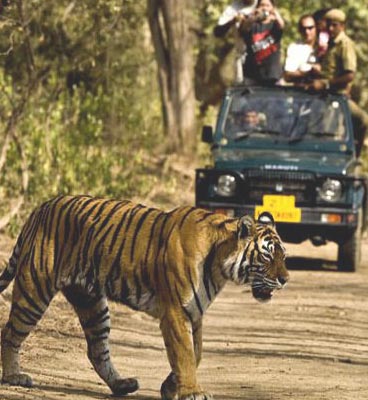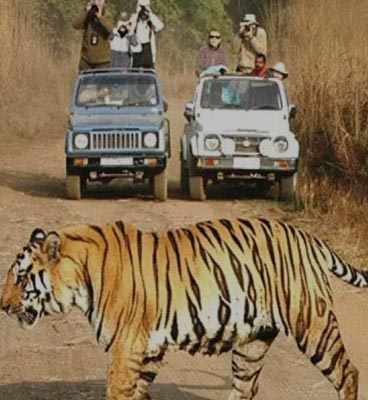Best time to visit Rajaji
Nestled on the foothills of the Himalayas, Rajaji National Park boasts a weather and climate system that supports a breathtaking array of flora and fauna. Rajaji National Park remains open for tourists from 15th June to 15th November. At Rajaji National Park, where the jeep and elephant safaris are the prime attractions for tourists, the months from November to March are the ideal duration to plan a wildlife trip to the national park. Continue reading to explore the ever changing climatic influences and weather patterns in Rajaji National Park.


Winter Season in Rajaji National Park (November - February)
Rajaji National Park resumes its safari activities on the 16th of November, just after the monsoon season. When the national park is reopened, it is embellished with dense foliage, rejuvenated from the heavy rainfall in the monsoon season. The mercury level drops to 3℃, or even lower during the night time. However, the safari activities provide a very comfortable experience, especially in the late afternoon, which usually operates from 2:30 pm - 4:30 pm. The early morning safari slot, mostly between 6:30 am - 8:30 am are quite chilly due to lowered temperatures.
Warm and woollen clothes are mandatory to pack while visiting Rajaji National Park during the winter season. The safaris operate for about a couple of hours in the national park and the warmth of the sun adds a layer of comfort while engaged in sighting the exotic species of flora and fauna. Additionally, winters are also a great time to spot several migratory birds.
Summer Season in Rajaji National Park (March - June)
March marks the beginning of the summer season. The weather from March to April is comfortably warm and the flora of Rajaji bursts into full bloom. However, beyond April it starts getting hotter and the scorching sun creates challenges in the safari activities. The daytime temperature lurks around 40℃ which makes it difficult to embark on a 2-hour safari ride. The early morning safari is more popular during the summer season. The benefit of planning a trip to Rajaji National Park during the summer season is that the dense flora dries in the hot weather thereby facilitating easier sighting of wild animals. It is recommended to wear light-coloured and cotton fabrics and be hydrated while going for a jeep safari in the summer season.
Monsoon Season in Rajaji National Park (July to September)
Rajaji National Park receives high downpours during the monsoon season, particularly from August to September. All tourist activities and entry are halted from mid-July to mid-November. Although the monsoon spell subsides by the middle of October, it takes time for the national park to revive to its original form, suitable enough to begin with the safari activities. Therefore, Rajaji is closed till mid-November.


